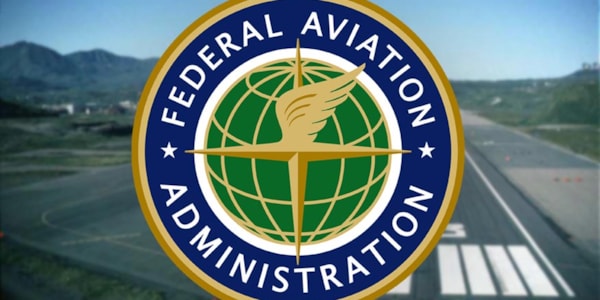FAA forms independent safety review team

The FAA has formed an independent safety review team to enhance the safety of the nation’s air traffic system. The group will present recommendations to the FAA on how to increase air traffic safety.
“We are committed to maintaining the safest period in U.S. aviation history,” Acting Administrator Billy Nolen said. “This team will strengthen our ongoing safety efforts and identify specific investments we can make to bolster the National Airspace System.”
RELATED STORY:
FAA panelists say complacency jeopardizes aviation safety
In March, Nolen called for a safety summit, inviting industry members and government officials to gather and discuss the increase in safety concerns like the rise in runway incursions. Most of these incidents occurred during the takeoff or landing phase and achieved public notoriety through social media and the news, growing concern over the safety of aviation in the U.S.
The FAA National Airspace System Safety Review Team will begin work in May and complete its work by October. The group will present its recommendations to the FAA, which will then use these ideas and recommendations to enhance safety in the national airspace.
The group includes members of the industry, from NASA to the NTSB.
Bolden aboard the Space Shuttle Discovery during STS-31 (Image courtesy of NASA, provided by the National Air and Space Museum)
Charles Bolden Jr. is a retired Marine Corps Major General and former NASA Administrator. President Barack Obama appointed him to be the 12th NASA Administrator in 2009, only the second astronaut to hold the position. He flew four Shuttle missions in his career as a NASA astronaut, logging over 680 hours in space. He is a graduate of the U.S. Naval Academy, flying over 100 combat missions during the Vietnam War and later serving as a test pilot. After completing his work as an astronaut in 1994, he served as the Assitant Commandant of Midshipmen at the Naval Academy and in 1998 as the Commanding General of the Marine Expeditionary Force attached to Operation Desert Thunder in Kuwait.

Capt. Tim Canoll as ALPA President
Capt. Tim Canoll was a U.S. Navy pilot for over 24 years and a Delta Air Lines pilot for over 30. He served as the president of the Air Lines Pilot Association, International (ALPA) and as the chief executive and administrative officer, oversaw the daily operations of the association that represents over 69,000 professional airline pilots in the U.S. and Canada. Canoll has served on other committees and councils like the FAA’s Drone Advisory Committee, Next Gen Advisory Committee, the AFL/CIO Executive Council and the Federal Reserve Bank of Atlanta Organized Labor Advisory Council. He is a graduate of the U.S. Naval Academy and a former Navy Reserve F/A-18 Strike Fighter Squadron commanding officer, also holding Airline Transport Pilot, Commercial Pilot and Remote Pilot certificates.
Patricia Gilbert is the International Federation of Air Traffic Controllers’ Association (IFATCA) Executive Vice President America. She had served for 12 years as the National Air Traffic Controllers Association’s (NATCA) Executive Vice President, helping to lead and oversee the efforts in building relationships with industry members and the government. Gilbert has served on various committees, like the FAA’s Drone Advisory Committee, the FAA/NATCA Collaborative Steering Committee, the Aero Club of Washington Board of Governors, the National Aeronautic Association Board of Directors and Director of the NATCA Charitable Foundation to name a few. She was appointed to the new Women in Aviation Advisory Board (WIAAB) in May 2020 and before taking her role at NATCA, she served 21 years at the FAA’s Houston Air Route Traffic Control Center.

David Grizzle in his time with the FAA (Image from NASA)
David Grizzle is a veteran of the aerospace industry, having served as an airline executive and holding many important roles within the FAA, also serving as COO of the Air Traffic Organization. He spent 23 years at Continental Airlines, running the airline’s marketing, strategic planning and international alliances divisions. He spent over a year working with the State Department in 2004, working as a part of the U.S Government’s reconstruction efforts in Afghanistan, before returning to Continental and founding the Customer Experience division. President Obama appointed him to serve as Chief Counsel for the FAA in 2009, where he held roles like Acting Deputy Administrator and COO before his departure in 2013.
Michael Huerta is an aviation and aerospace consultant, having served as Administrator of the FAA from 2013-2018, after joining in 2019 as the Deputy Administrator. In his time with the FAA, he led efforts to modernize the nation’s air traffic control system while preparing for the integration of commercial space operations and small unmanned aircraft systems. Huerta has served in executive positions with the U.S. Department of Transportation, the Salt Lake Organization Committee for the Olympic Winter Games of 2002, the Port of San Francisco and the New York City Department of Ports, International Trade and Commerce.
Robert L. Sumwalt is the Executive Director of the Boeing Center for Aviation and Aerospace Safety at Embry-Riddle Aeronautical University. He also serves as Distinguished Fellow in Aviation Safety and oversees the research and development of the Center, setting the overall strategy. Sumwalt has served as Chairman, Vice Chairman and Member of the U.S. NTSB, serving from August 2006 to June 2021. He was a pilot for 32 years and spent 24 of those years with a major U.S.-based international airline.
Each of these members is bringing decades of experience in aviation, serving as leaders in different sectors of the industry and bringing a well-rounded perspective to the new committee.
Following the March Safety Summit, the FAA has continued in its efforts to bring the industry back into the golden age of aviation. The FAA issued a safety alert to airlines and pilots, reminding them to be attentive during the taxi, takeoff and landing stages. The FAA’s Air Traffic Organization took action, ensuring that supervisors devoted their full attention to the operation and airfield during hours with peak traffic. The FAA’s airport division has also been working to roll out and implement the Safety Management Systems at airports nationwide.
RELATED STORIES:
FAA’s new rule requires SMS program implementation at over 200 airports
Safety alert issued after series of runway incursions, FAA urges airlines and pilots to take action
The new committee comes at a time with safety is a top priority within the industry. The FAA is working diligently to improve safety in a critical time in aviation. Nolen has said to the industry, “zero is the only acceptable number for fatal accidents.”
“Going forward, zero has to be the only acceptable number for serious incidents and close calls,” Nolen said.
Contact
Name: Haley Davoren
, Digital Content Manager
Company: GlobalAir.com
Website: https://globalair.com
Email: [email protected]
Phone: 502-456-3934
©2023 GlobalAir.com, Haley Davoren. All rights reserved.

Recent Comments